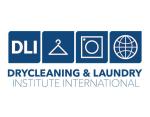CHICAGO — Companies that don’t put a premium on retaining the teams they currently have are not only going to lose the productivity those team members brought, but they are also risking keeping that position open longer than they probably anticipate because of the tight labor market.
During his recent webinar “Five Turnover-Cutting Steps You’re Not Doing Today,” hosted by the Society for Human Resources Management (SHRM), Dick Finnegan, the CEO of C-Suite Analytics, offered leaders new ideas for keeping their teams in place.
In Part 1 of this series, we looked at the reasons behind why business owners are having an increasingly difficult time navigating the labor market. In Part 2, we examined the reasons why most employees quit their jobs and how to view the situation in a more productive light. Today, we’ll conclude by listing concrete actions leaders can take to keep employees happy and loyal to the company.
Stay Interviews
Finnegan developed a method of employee questioning called “Stay Interviews.”
“I felt it was incumbent upon me that, if the No. 1 reason employees stay or leave is how much they trust their boss, those bosses had to be trained on a method that is interactive. Not a course on how to build trust, but doing something with each employee that builds trust.”
The Stay Interview is a structured discussion a supervisor conducts with each individual employee to learn the specific actions he or she must take to strengthen that employee’s engagement and retention with the organization. The strength of this type of interaction is that it gives leaders information they can use immediately, rather than the data they get from exit interviews, when it’s too late with that particular employee.
The other benefits to this are that it puts the focus on individual employees, including top performers, rather than the company’s workforce at large, and it puts supervisors in the solution seat, rather than the HR department.
The Stay Interview consists of five questions:
- When you travel to work each day, what things do you look forward to?
- What are you learning here?
- Why do you stay here?
- When was the last time you thought about leaving our team? What prompted it?
- What can I do to make your experience at work better for you?
“If we know the answers to questions 1 and 3, we know how to make you happy,” Finnegan says. “You just taught us, so we can give you more of that.”
Question No. 2 is important, Finnegan says, because while not everybody wants a career, learning is universal.
“We train managers how to build learning plans if somebody says, ‘I’m bored, but I don’t know what I want to learn,’” he says. “You say, ‘Come back in three days — I’ll develop some ideas and you develop some, too,’ because this is the low-hanging fruit on building trust.”
Question No. 4 can be a surprise that leads to valuable insights. “Notice this starts with ‘When,’ not ‘Have you,’” Finnegan says, “because everybody has, so don’t be afraid to tell us.”
Questions 3 and 4 are coupled so that the employee can make the argument in their own head to stay. “We need these employees to discover and announce to themselves why they stay,” he says, “so they can then compare what they just heard themselves say to why they might leave.”
Question No. 5, Finnegan says, is simply asking for instructions from the employee: “Make me a better boss for you.”
These questions should be jumping-off points for deeper discussions. “The key is to take five questions and convert them to 20 questions,” Finnegan says. “You can begin to get the flavor of why it is an employee will stay longer if their manager cares enough. Employees go home and over dinner, they say, ‘I can’t believe the meeting I had. It was about me.’”
Break It Down
Finnegan says that the only way Stay Interviews will be accomplished and helpful is if the top-level leaders in the organization see their value.
“You can’t walk into a company and say, ‘We’re all going to do Stay Interviews,’” he says, “because the executives have to buy in. ‘Buy in’ means that they see turnover as both a top-five priority, and as an operations priority instead of an HR priority.”
One way to make these leaders see the importance of employee retention is to break it down into “the language of the CEO” — dollars. “Reporting in dollars generates urgency, accountably and action,” Finnegan says.
Some of the factors that can be used to convert a job opening to a monetary value are how long does the average job stay open, how long it takes a new employee to learn the job, what an open job costs in revenue, and what does it cost to acquire a person for that position.
By taking these numbers into account, Finnegan says, the focus goes from an “HR” problem to a “company” problem, and gets all the decision-makers pulling in the same direction to solve the issue.
Another part of combatting labor shortages in a company is setting proper goals, Finnegan says.
“Here are two goals you should set,” he says. “Set one for all turnover in the company, and set another to improve new hire retention.”
Taking an accurate read of the probability of individuals staying at your company is also possible when open lines of communication are prioritized. Using a color-coded indexing method can give a quick and simple view of the health of this part of operations.
“Forecasting is deliberately simplistic and so important,” Finnegan says. “Green means, ‘I think this person will be here in a year.’ Yellow means, ‘I think this person will be gone in six to 12 months, voluntarily or otherwise.’ Red means, ‘I think this person would be gone in less than six months.’ And we tell managers they can change their forecast any day that they want, but don’t get caught losing a green.”
Knowing all this information allows a very important element to be introduced when it comes to employee retention: accountability.
“In the end, it goes back to goals and forecasts,” Finnegan says, “because now we have two new metrics. Did you make your goals? Did you develop accurate forecasts based on the forecast of those who have left? It’s an entirely new discipline for executives to be asking their managers — ‘Let’s look at your data.’”
When all these factors are discussed with upper-level management, everyone will be on the same page, Finnegan says.
“Once we leave that two-hour meeting, the executives totally own retention — HR doesn’t own it anymore — and we have a plan to put it into place. That’s big.”
For Part 1 of this series, click HERE. For Part 2, click HERE.
Have a question or comment? E-mail our editor Dave Davis at [email protected].




























































































































